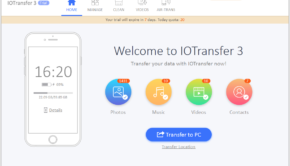The Indispensability of Data Governance to Businesses: Know in Depth
In today’s business circuit, data has become a precious asset. You must have heard people saying that data is the modern-day oil.
Despite people seeing data as an asset for businesses, its intangibility has made it challenging to account for its actual value. And the lack of proper data governance is the primary reason behind the challenge.
So, there arises the need for implementing proper data governance, which spans beyond data management to engulf the entire data cycle, starting from assessment and valuation to investments and data utilization.
Without data governance, massive data can lead to chaos, minimizing businesses’ opportunities.
You should not worry at all as there are data intelligence and automation that can help you organize your data and maximize its value.
In the traditional data management process, multiple databases are incapable of mutual interaction, necessitates redundant backups, and calls for human intervention, leading to errors and security breaches.

Automated data governance is the perfect solution to the issues that offers the following advantages:
Silos Elimination
Data silos mean a data set is accessible by a single department or branch of a company. The downside is limiting productivity and increasing redundancy. Besides, it can also lead to ROT data, which is redundant, outdated, or trivial data.
Many extra data sets get created when several applications run, resulting in data redundancy. And the applications that are used less will have outdated data, which needs to be verified manually.
But, an automated system can fix the problem. It can extract data from various locations and applications and store it in a common location. With intelligent algorithms, automated systems can parse and classify data according to standard pre-set conditions, easing conflicting data resolution.
Minimize Employee Costs

Data specialists account for a large portion of employee costs for a business. When you automate the data collection process, you can lower your employee cost and slash their workload by around 90 percent.
With data automation, employees can spend more time understanding the data and using it in the right context, rather than wasting time searching for the correct data. Usually, data scientists spend around 60 percent of their time cleaning and organizing data. It reduces their time to work in essential areas, like data mining for patterns or algorithm improvements.
Besides, most data scientists say that cleaning data is the most irritating part of their work.
Adherence to Compliance
GDPR and CCPA are the most critical data protection laws passed in the EU and California. The laws have set the standards for many nations to follow. The laws enforce strict data management requirements dictate harsh penalties for companies that fail to comply with the requirements, ensuring data privacy.
Companies can ensure that all data sets comply with the regulations with automated systems. The systems can enable businesses quick determination of the data vis-a-vis the rules. As such, firms can quickly respond to customers’ data requests.
Data Management

An automated system allows businesses multiple ways to manage data. Such systems can enable companies to find all data in a centralized location and do away with creating backups and maintaining copies of data on the cloud.
Automated systems can alleviate common causes of ROT data. The smart algorithms crawl through the entire data-sets and identify outdated data versions to enable managers to decide which data to retain and which data to throw away.
When you carry out redundant backups, you use significant server resources. With automated tagging and reporting, you can keep more server space free.
When you organize all data in a centralized location, you can connect the data with your applications, allowing your team to build their tools. With automation, you get the flexibility to move to a cloud-based platform without completely reinventing data analysis tools.
Components of a Data Governance Strategy
Data governance is a broad framework that calls for the inclusion of many things, such as policies, rules, procedures, and structures.
To ensure that your data governance strategy aligns with your company’s objectives, you need to construct a powerful strategy. You need to create a foundation to guide the process, and that should typically include: a mission statement, goals, goal measuring metrics, and responsibilities.
It is also crucial for you to document every aspect of the framework and share them with your entire employees.
Apart from these policies, it is good to implement data governance software to implement your strategy. However, the usage of such software is not a must.
Data is an important asset for companies. And to ensure that the data is accessible and usable, it is necessary to implement a data governance strategy. It will result in better data analytics, making better decisions apart from firmer operational support.
What is more, data governance allows you to avoid data inconsistencies and errors in data, which is the major factor behind integrity issues, poor decision making, and many problems.
Data governance also helps in adhering to regulatory compliances. It makes businesses compliant with all regulatory requirements and reduces risks and operational costs.
The Data Governance Team
The responsibility of executing your strategy falls on your data governance team, which is the key part in ensuring your data governance strategy’s successful implementation. A typical data governance team comprises of:
The Data Manager is responsible for leading the formulation and implementation of policies and systems.
The Data Governance Architect is responsible for overseeing designs and implementation.
Data Strategist is responsible for the creation and implementation of strategic plans.
The Compliance Specialist is responsible for ensuring compliance with all regulatory standards.
Conclusion
Simply put, data governance means that companies have a high standard of data management throughout their entire data cycle. It entails improved data quality, lower data management costs, and access to data for all stakeholders. With data governance, companies can make better decisions for eliciting better business outcomes. And in the competitive business landscape prevailing today, data governance has become a must for all businesses to manage data, lower risks effectively, and reduce costs. Another critical objective of data governance is ensuring data security and restricting unauthorized data access.
















